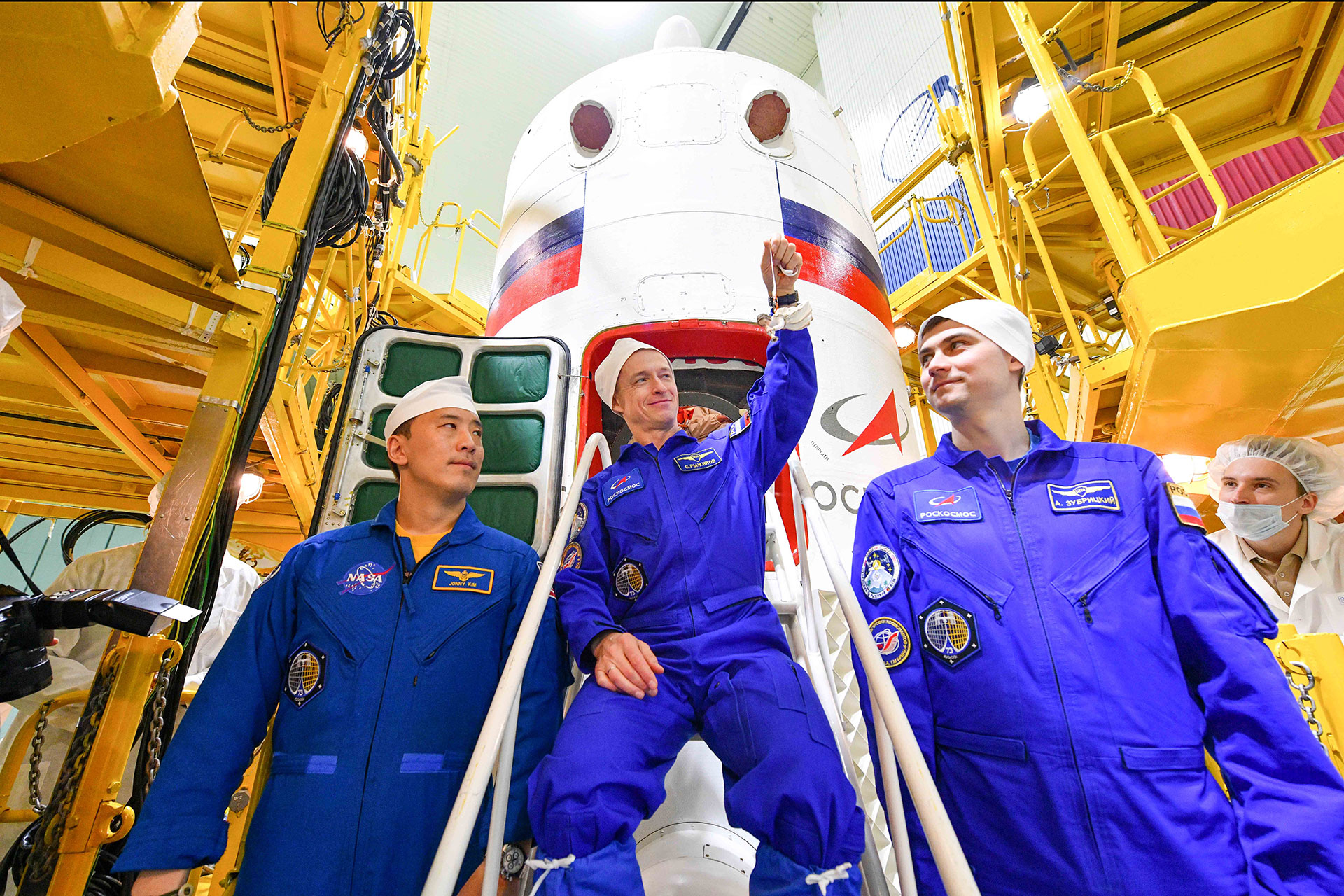Russian Clipper Ship Draws European Interest

Europeis eying Russia's proposed crew-carrying Clipper spaceship, not only for use inInternational Space Station operations, but also to carve out their role infuture Moon, Mars and beyond exploration.
TheRussian Clipper would be a sporty replacement for the venerable Soyuzspacecraft and would feature abilities like those touted for NASA's drawingboard vision of a Crew Exploration Vehicle, or CEV.
Itis expected that a decision on Europe's future involvement in the Russian Clipperconcept will be made this December at a European Space Agency (ESA) MinisterialCouncil meeting.
Clippership stats
Russian spaceofficials have explained that the still-to-be-built Clipper can carry sixpeople: two pilots with the other four seats for astronauts or space tourists.The craft would be capable of hauling some 1,540 pounds (700 kilograms) ofcargo.
In early statements, Russianspace authorities have indicated that the Clipper could be in service in the 2010-2011timeframe.
Clipper's launch vehiclewould be a Russian Onega rocket - a modified version of the Soyuz carrierrocket and could head spaceward from European as well as Russian spaceports.
Breaking space news, the latest updates on rocket launches, skywatching events and more!
ESA Looks East for Future Cooperation
Lastweek, RussianPresident Vladimir Putin stepped into a full-scale mockup of the Clipperspaceship at MAKS 2005, a Russian International Aviation and Space Salon, heldAugust 16-21 in Zhukovsky, close to Moscow.
Putinwas joined by the head of the Russian Federal Space Agency, Anatoly Perminovand the Director of the European Space Agency's (ESA) Launchers Program,Antonio Fabrizi. Russian Defense Minister Sergei Ivanov also participated.
ESA'sFabrizi discussed with Putin future collaboration on projects such as Clipper,in which a number of ESA Member States, including Italy, France, Germany, Belgium and Spain have expressed interest.
Themockup of Russia's Clipper design has been making the rounds of late. It wasshowcased in June at the Paris Air Show.
Themulti-use vehicle was part of Russia's Rosaviakosmos display at the Paris Air Show. Rosaviakosmos is Russia's Federal Space Agency,with the Clipper design a product of that country's Energia Rocket and Space Corporation.
Starting point studies
InJuly, Space News reporter, Peter de Selding, noted that the proposedClipper vehicle could be the basis of a future crew-carrying vehicle that wouldprovide an alternative to the U.S. Crew Exploration Vehicle, based on remarksfrom DanielSacotte, head of ESA's Human Spaceflight program.
Sacottesaid that ESA will propose to its governments in December that they fund aseries of design studies, in cooperation with Russia, using Clipper as astarting point.
"We are discussing thiswith Japan as well," Sacotte said. "What we want to do is to be in a positionaround 2007 or 2008 to ask our governments to fund a development program. IfClipper turns out to be credible, it could be based on that. Our starting pointis that for an international space exploration program to depend on one craftis too risky."

Leonard David is an award-winning space journalist who has been reporting on space activities for more than 50 years. Currently writing as Space.com's Space Insider Columnist among his other projects, Leonard has authored numerous books on space exploration, Mars missions and more, with his latest being "Moon Rush: The New Space Race" published in 2019 by National Geographic. He also wrote "Mars: Our Future on the Red Planet" released in 2016 by National Geographic. Leonard has served as a correspondent for SpaceNews, Scientific American and Aerospace America for the AIAA. He has received many awards, including the first Ordway Award for Sustained Excellence in Spaceflight History in 2015 at the AAS Wernher von Braun Memorial Symposium. You can find out Leonard's latest project at his website and on Twitter.
